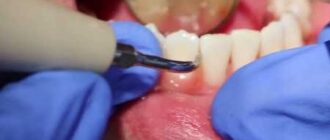Phosphoric acid—it’s in your favorite soft drink, that sweet-tangy treat you can’t resist. But have you ever wondered what it does to your teeth? If you’re a fan of soda, you might want to keep reading. This article will explore the effects of phosphoric acid on dental health, feature insights from dental professionals, and share real-world experiences of those who’ve seen its impact firsthand.
What Is Phosphoric Acid?
Phosphoric acid is a colorless, odorless mineral acid commonly used in the food and beverage industry to give soft drinks their tartness and extend their shelf life. It’s an essential ingredient in many sodas and energy drinks, adding that characteristic tangy flavor. But what makes it a favorite for beverages also makes it harmful to your teeth.
The Science Behind Phosphoric Acid and Your Teeth
Our tooth enamel is a hard outer layer that protects against decay. However, it’s not invincible, especially when exposed to acids like phosphoric acid. The enamel consists largely of calcium and phosphate, both of which are highly susceptible to demineralization. Phosphoric acid can break down this enamel, leading to weakened teeth and an increased risk of cavities.
Dr. Emily Johnson, a dentist with over 15 years of experience, explains, “Phosphoric acid creates an acidic environment in your mouth, causing demineralization. Once the enamel breaks down, it doesn’t regenerate. Even moderate consumption of soda can have significant long-term effects on dental health.”
Real-World Stories: People Affected by Phosphoric Acid
Case 1: Tom’s Experience with Soda-Induced Decay
Tom, a 28-year-old office worker, shares his story of addiction to cola. “I used to drink about three cans a day,” Tom admits. After five years of this habit, Tom started noticing sensitivity in his teeth, which later turned into visible decay. His dentist informed him that the phosphoric acid in his beloved cola was responsible for the erosion of his enamel. He ended up needing several fillings and has since switched to water as his main beverage.
Case 2: Lisa’s Cautionary Tale
Lisa, a 35-year-old mother of two, was careful about her kids’ sugar intake but didn’t think much about her own consumption of diet sodas. After experiencing tooth pain, her dentist found multiple areas of enamel erosion and pinpointed phosphoric acid in her favorite diet cola as the main culprit. Lisa said, “I never thought diet sodas could be so bad. I thought no sugar meant no harm. Turns out the acid is just as dangerous.”
Expert Opinions: What Dentists Want You to Know
Dr. Michael Patel, a dental health expert, emphasizes, “People tend to think sugar is the only thing harming their teeth, but phosphoric acid can be just as damaging. It lowers the pH of your mouth, making it a perfect environment for bacterial growth, which further exacerbates the risk of cavities.”
To put it simply, the acid weakens enamel and softens it, allowing bacteria to get in and cause decay. Frequent exposure to phosphoric acid, especially from sodas consumed over the course of a day, is a recipe for disaster.
The pH Factor: What Role Does It Play?
To understand how phosphoric acid impacts your teeth, it’s helpful to consider the concept of pH levels. Tooth enamel begins to demineralize at a pH of 5.5 or lower. Phosphoric acid significantly lowers the pH of your mouth, often down to 2.5 to 3.5, depending on the drink. Such acidic levels put your teeth in a constant state of vulnerability.
Dr. Johnson explains that “even sipping on a soda for hours is worse than drinking it in one go because your teeth are bathed in that acidic environment for longer periods, causing more erosion.”
The Domino Effect: Enamel Erosion to Cavities
Once phosphoric acid breaks down enamel, the damage doesn’t stop there. The next layer under the enamel, called dentin, is softer and more prone to decay. This can lead to:
- Tooth Sensitivity: Weakened enamel exposes the dentin, causing sensitivity to hot, cold, and sweet foods.
- Cavities: With compromised enamel, bacteria can easily create cavities.
- Tooth Discoloration: Eroded enamel also results in discolored teeth because the darker dentin layer becomes visible.
What Can You Do to Minimize the Damage?
So, what can you do if you’re someone who loves their soda but also wants to keep their teeth healthy? Dentists recommend several strategies to minimize damage:
- Limit Frequency: Instead of sipping throughout the day, consume your soda in one sitting to minimize acid exposure.
- Rinse with Water: After drinking soda, rinse your mouth with water to help neutralize the acids.
- Use a Straw: Drinking through a straw helps bypass your teeth, reducing the exposure to phosphoric acid.
- Maintain Good Oral Hygiene: Brushing and flossing regularly, especially after consuming acidic drinks, can help reduce the risk of decay.
- Fluoride Treatments: Fluoride helps to remineralize weakened enamel, providing a protective barrier. Ask your dentist about fluoride treatments if you drink soda regularly.
Personal Insights: How People Changed Their Habits
After learning about the impact of phosphoric acid, many people have opted to change their habits. Kevin, a 40-year-old construction worker, shared that he replaced his daily soda with sparkling water. “I still miss the cola sometimes, but I’ve gotten used to the sparkling water. My dentist said my enamel loss stopped after I made the switch, which was a big relief.”
Amy, a school teacher, tried gradually reducing her soda intake by drinking juice mixed with sparkling water until she was able to give up soda altogether. “The acid erosion scared me,” she said, “especially when I learned that enamel doesn’t grow back. I just didn’t think it was worth it anymore.”
The Final Word: Balance Is Key
While cutting out phosphoric acid entirely might be the best choice for dental health, it’s understandable that many people don’t want to give up their favorite drinks. Moderation is key. Dr. Patel suggests, “If you enjoy a soda every now and then, that’s okay. Just be mindful of how often and how you consume it. The damage from phosphoric acid is cumulative, so the less exposure, the better.”
In conclusion, phosphoric acid poses a significant risk to your dental health by contributing to enamel erosion, increased sensitivity, and cavities. If you’re not ready to give up your soda habit, taking steps to minimize the damage—like using a straw, rinsing your mouth, and limiting your frequency—can help protect your smile. Remember, your teeth don’t have to pay the price for your taste buds.






